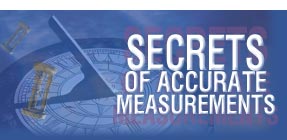 |
 |
 |
| RU |
|
Login
Newsletters
There is no newsletter category found. Information
|
NI Technology Helps Subaru Reduce Electric Vehicle Test Development Times by 90 Percent 05/04/2018 NI, the provider of platform-based systems that enable engineers and scientists to solve the world’s greatest engineering challenges, announced that major automotive manufacturers like Subaru are using NI hardware-in-the-loop (HIL) technology to simulate actual road conditions for electric vehicle testing, eliminating environmental factors to reduce test time and costs. Traditionally, engineers have conducted vehicle tests using finished cars on test courses or public roads to check the vehicle’s performance and safety response. However, certain limitations, such as weather and fluctuating road surface conditions, can make it difficult to conduct reproducible tests on roads in a timely manner. Moreover, electric vehicles are extremely complex due to their many subsystems, which are all interdependent on each other. This complexity makes the job challenging for automotive test engineers with short development cycles and pressure to limit costs. To combat these issues, Subaru replaced the roads in the validation tests with a NI HIL simulation solution built on NI PXI products and LabVIEW software. With the HIL system, Subaru can eliminate environmental factors and thoroughly and efficiently test a vehicle’s embedded controller in a virtual environment before running real-world diagnostics on the complete system. “By using NI PXI products and LabVIEW, we were able to completely implement a customized HIL system in just one to two weeks and develop our software in-house,” said Daisuke Umiguchi, Electrified Power Unit Research and Experiment Dept., Subaru Corporation. “This helped us keep product purchasing costs to around one-third of the cost of adopting solutions from other companies, and, because of our familiarity with LabVIEW, keep our software development costs to around one-sixth of the cost of commissioning an outside developer.” Subaru further outfitted its vehicle test solution with a controller-driven dynamometer by HORIBA and CarSim vehicle dynamics simulation software deployed by Virtual Mechanics. Together, they produce load conditions equivalent to those generated on actual roads. This driving system transmits the calculated values to the NI HIL system in real time to create closed-loop control between the models on the HIL system and the driving system. As a result, the HIL interaction system can apply the appropriate load to the vehicle throughout the tests. Subaru plans to use this test system at the final stages of development for electric vehicles as a final quality check, and eventually expand its use for all car types. By adopting this system, Subaru anticipates reducing labor hours by half compared to conventional methods. Company profile: National Instruments Related Information:
Companies' news
KIPiS articles
KIPiS News & Events
Trade fairs
|
Current issue
Search
|
|
|
| © "Test & Measuring Instruments and Systems" ("KIPiS"), 2000-2024 |

























